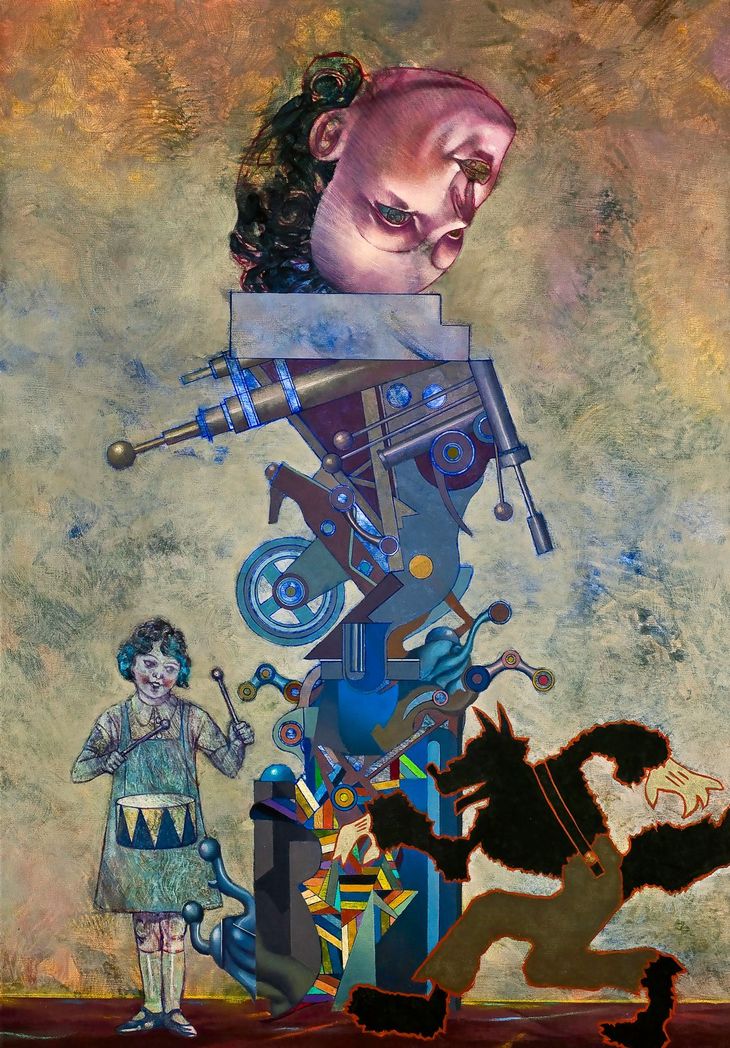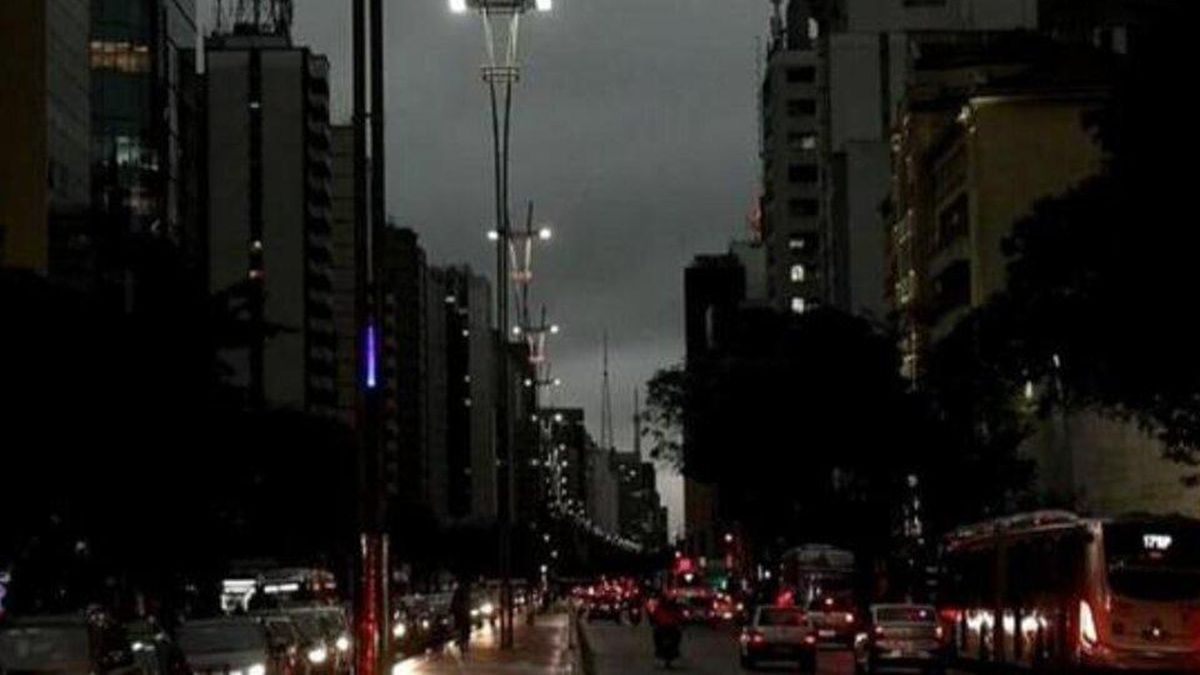“Not all who are are, nor are all who are” is the introduction to the text of “Validity of Surrealism”an exhibition that takes place in Blue Point-Museum of Sierras Bayas (Olavarría). Its authors and also curators, Gabriela Aberastury and Silvio Oliva Dryspoint out that this sample “It is the result of the concern that inhabited our conversations about Argentine art.”
The adoption of a movement that emerged in Europe in 1924 when the French poet André Breton (1896-1966) published a treatise condemning the fashion of realism and rationality. In his famous manifesto he said: “The mere word ‘freedom’ is the only one that still excites me” and defines it as: pure psychic automatism by means of which one attempts to express verbally or in writing or in any other way, the real functioning of thought. It is a dictation of thought, without the regulatory intervention of reason, alien to any aesthetic or moral concern.
In its beginnings it was oriented towards literature and philosophy. Bretonwho was initially skeptical about its possibilities, in his essay “Surrealism and painting” begins its categorization and justification since painting has access to increasingly more complex realities than the empirical world.
When René Magritte (1898-1967) sees a reproduction of a painting by De Chirico He becomes independent of all the isms he had been through, settles in Paris and associates with Eluard, Breton, Arp, Miró, Dalínoted that “Painting, which deserves to be called the art of similarity, allows the graphic description of a thought that can become something visible.”
Surrealism came to an end when the Second World War broke out in 1939, although Breton I did not give up on it. The problems raised were not resolved; for example, those of subjective experience, the unconscious and the conscious, the individual and society, spontaneity and theory, art and life.
Sergio Camporeale.jpeg
One of Sergio Camporela’s works exhibited at the exhibition “The validity of surrealism”
Centenary
This brief introduction is necessary as surrealism is celebrating its 100th anniversary. And all over the world there are examples of this movement that produced figures such as Dalí, Magritte, Miró Picasso, Ernst, Tanguy, Man Ray, Pevsner and Klee, among many others.
It is noteworthy that this recently inaugurated museum has accepted the challenge of this initiative since the exhibition is dedicated to Argentine artists, many of whom began in the 1930s influenced by the Breton manifesto.
Dated from 1929 to the present, it is very comprehensive and is composed of 70 works belonging to 39 artists, Not all of them have a purely surreal image, but rather, belonging to different generations, some border on dreamlike images, others appeal to the fantastic, so the spectrum is very broad..
The work of Eolo Pons (1914-2007), a landscape artist from the North of Argentina who, with his restless spirit, ventured into different trends and produced in 1938, among others, “The Death of the Skater” here exposed, of a clearly surrealist nature.
There is work of Ideal Sanchez (1923-1989) who was a member of the Orion Group. Both Pons as Sanchez They were disciples of Lino Enea Spilimbergowho had made etchings on a prose text “Interlun” (1937) by the Argentine poet Oliverio Girondo which drew on symbolism and surrealism.
In Azul he was born Alberto Lopez Claro (1882-1952), known by his pseudonym Claudio Lantierwhose work was marked by a “melancholic impulse, complex and saddened by the universal future”It should not be overlooked that he was a poet, playwright, critic and art historian. Aldo Pellegrini (1903-1973) the founder of the first surrealist group of Argentine artists in South America. In 1967 he organized the important exhibition at the Di Tella “Surrealism in Argentina” and he was also a spokesperson for the first abstract artists in our country.
Works by: Peter Pont Verges (1924-2003), an artist with a versatile career, Juana Butler (1928-2017) who participated in important exhibitions “Surrealist tendencies” and “Tribute to Battle Planas”. The critic Damian Bayon He described his surrealism as “late” and “fantastic.”
Works by Victor Chab from 1970-2001, from Noah Nojechowicz (Poland, 1923-Buenos Aires, 1998) of whom Aldo Pellegrini He pointed out that “an imperceptible shudder runs through the entire structure of his paintings as if the blood of mystery flowed through them”.
The works of Ana Tarsia (1931-2017), Hugo Sbernini (1942-2019) and its characteristic unfoldings, Sergio Camporeale one of the founders of the Grabas Group, a very important reference in Argentine engraving; Armando Sapia (1942-2023) with its subtle ironic line that invites the complicity of the observer, the solitary and enigmatic characters of Zdravko Ducmelic (Croatia, 1923-Buenos Aires,1989) very close to the surrealism of Roberto Aizenbergillustrated poems by Girri and of Borgeswith whom he shared a great friendship.
Included in this relevant sample are: Gabriela Aberastury, Angú Vázquez, Alicia Díaz Rinaldi, Norma Bessouet (1940-2018), Jorge Diciervo, Juan Doffo, Leo Tavellaartists with vast national and international careers. Emilio Reato (1962), German Wendel (1968) Sergio Bazan (1962), Monica Rojas (1964) were invited to this exhibition not only for their outstanding work but also for the unusual and unconventional proposals.
(Closed at the end of September. Rua Barros 2356 Sierras Bayas, Olavarría).
Source: Ambito
I am an author and journalist who has worked in the entertainment industry for over a decade. I currently work as a news editor at a major news website, and my focus is on covering the latest trends in entertainment. I also write occasional pieces for other outlets, and have authored two books about the entertainment industry.




